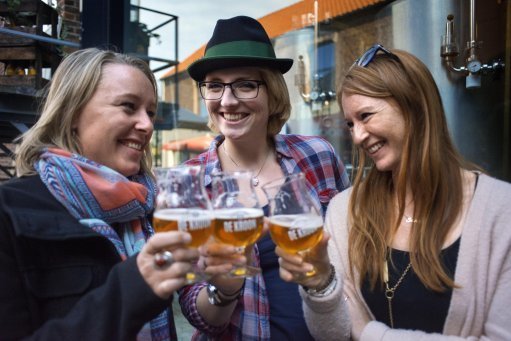The steady decline in vocations has taken its toll on Belgium’s famous Trappist beers as one of the order’s six registered breweries in the country lost its accreditation after its last monk left the Achel monastery.
The strict rules for authentic Trappist beer require breweries to be located within a monastery, use revenues for the monastery or charity, and be supervised by a Trappist monk.
St Benedict’s Abbey in Achel, in a northeastern village near the Dutch border, no longer meets the third condition since Prior Gaby, in his 80s and ailing, had to move to the mother abbey in Westmalle in central Belgium.
That leaves only five breweries in Belgium and eight in other countries allowed to display the words “authentic Trappist product” on their labels.
“If vocations don’t come, well … we’re in the Lord’s hands. When it ends, it ends,” said Abbot Nathanaël Koninkx in Westmalle. “But it won’t happen tomorrow. Our oldest brother is 86, but the youngest is just past 30. So we can last for a while.”
Fans of Achel, probably the least-known of the Belgian Trappist tipples, can take the news as calmly as the abbot. The monastery’s pale and brown beers, with a hefty alcohol content of either 8 or 9.5 per cent, will still be brewed and sold as before. Just without the “ATP” label.
When the next Belgian brewery loses the true Trappist title is just a matter of time. There are only about 100 Trappist monks in the country, about half the total 20 years ago, and most of them are quite old.
Of the five remaining authentic Trappist beers, only one – Westvleteren – is actually brewed by monks from the Order of Cistercians of the Strict Observance. Lay brewers supervised by Trappists produce the others.
“Some communities will die out,” Wim Vandewiele of the Catholic University of Leuven told the Antwerp daily Het Nieuwsblad. “But Westvleteren’s numbers remain constant, Westmalle too. These Trappist communities will definitely not disappear.”
The remaining authorised Trappist breweries in Belgium are Chimay, Orval, Rochefort, Westmalle and Westvleteren. Rochefort, the oldest, dates back to 1595.
Monasteries in Belgium, Germany and the Netherlands launched the “authentic Trappist product” label in 1997 to stop other breweries from misusing the Trappist name to cash in on the growing popularity of craft beers in general and small Belgian brews in particular.
There are now just 13 genuine Trappist breweries, almost half of them launched in the past decade. “About ten years ago, they suddenly woke up abroad,” said Belgian brewer Jef Van den Steen. “First the Austrians joined in, then the Americans, the Italians and finally the British.”
Mount St Bernard Abbey, near Coalville in Leicestershire, only began producing its Tynt Meadow beer in 2018.
Other Trappist-style beers are called abbey beers and range from nearly identical to only vaguely linked to an actual monastery, if at all.
Van den Steen sees Trappist-style beer surviving even if the monasteries don’t. “The Trappist is the pride of our country and it might lose some of its halo,” he said. “But we shouldn’t worry. The quality of our beer will remain.”



 Loading ...
Loading ...